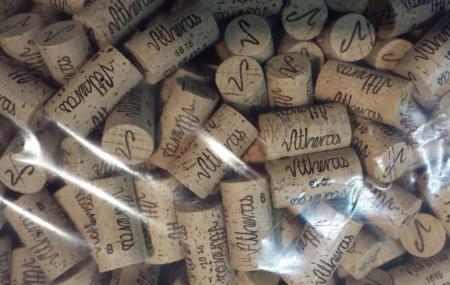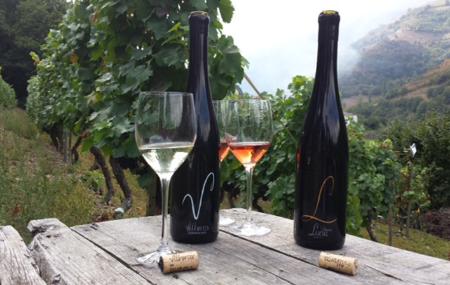Perhaps it is still a bit unknown amongst the vast panorama of Spanish wine, due to the scare quantity of grapes that are processed in this area as well as the number of existing wineries. But it is important to know that the councils of South Western Asturias have been linked to wine for over ten centuries.
As an anecdote that certifies its roots and traditional, one detail is enough, the towns where vineyards are planted today coincide almost fully with the places where wine was produced in the Middle Ages.
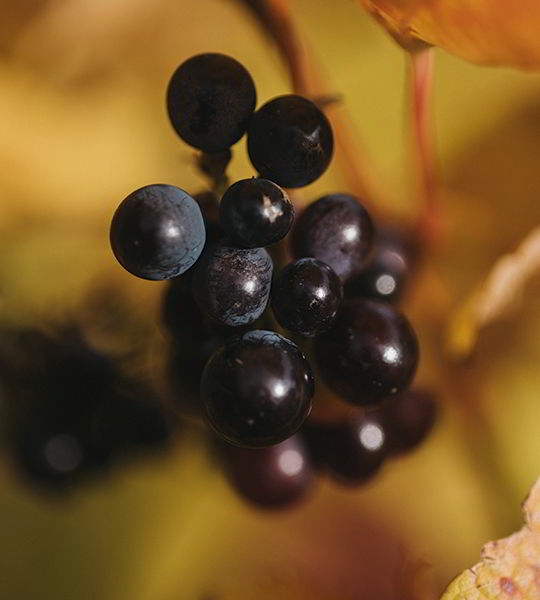
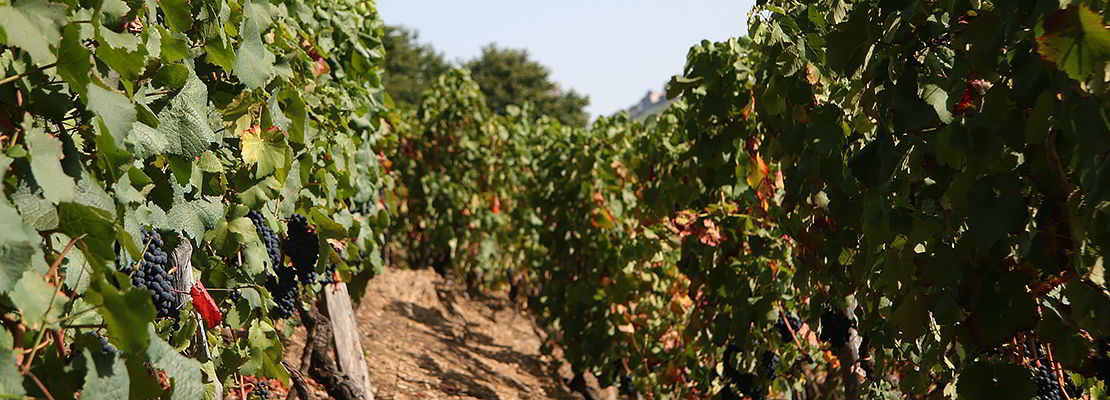
The abbots of the Monastery of Corias, Juan II and Pedro II, had already had a relevant role having incorporated the grape to their dominions and started to make wine.
Wine vacation is an undoubtable trend and Asturias it is becoming more and more permeable to this phenomenon. Here you will not find large buildings or thousands of sleeping barrels. The Asturian wineries are small, artisan, you could even say family-owned. The steep terrain of the area is a complete surprise for the visitor, who is also often fascinated by the originality of the wines. You can walk around the vineyard, get to know the production process, discover the indigenous varieties, observe the barrel room and even taste the wine of the different wineries.

Cangas wine has received many awards throughout history and it now enjoys a moment of splendor, with a professionalisation and a care of the vines that was not applied in the same way for decades, when homemade and local consumption prevailed. Behind, the times in which six thousand hectares in the area were counted remain, today many less, but ahead, a path full of opportunities and successes can be glimpsed.
Why? Because it has a good trump card in its hand, since it has some varied native grapes, like the Albarín white grape (not to be confused with Albariño because its characteristics are very different) and the Carrasquín reds, black Albarín and black Verdejo. If to this we add the changes that the climate is experiencing, since it is sunny in itself in these councils, the grape obtains an ideal level of natural ripening.
The landscape is abrupt, mountainous, with slopes whose gradients exceed 30 degrees of inclination. Imagine what the grape harvest could be like, only apt for the strong: a "heroic viticulture".
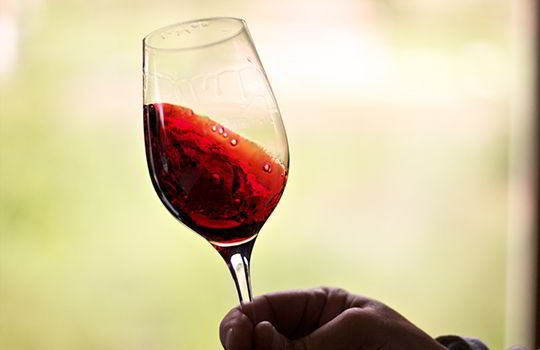
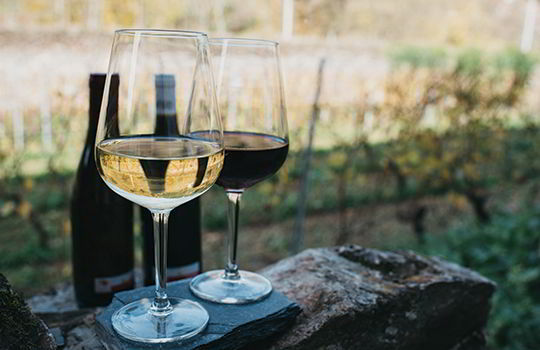
Currently, ten wineries have their headquarters in Asturias, located in the municipalities of Cangas del Narcea, Degaña, Ibias and Siero. In the path, new projects are appearing, that confirm that the Asturian vineyards have their attractive and that they will offer in the next few years very deep, fertile soil.
It is certain that they have achieved something that few thought would happen, that the Cangas wines would have a back label that allows them to differentiate themselves, recognise a historic wine region and go out with pride to the national competitive market. Cangas wine has changed a lot in the last 20 years, improving with each crop, looking after each vine more, looking for more balanced wines that harmonise well with Asturian gastronomy. Currently, they have seven manufacturing wine cellars and over 50 wine-growers welcomed to this quality mark, approved by the European Union in 2014, that manufacture around a hundred thousand litres.
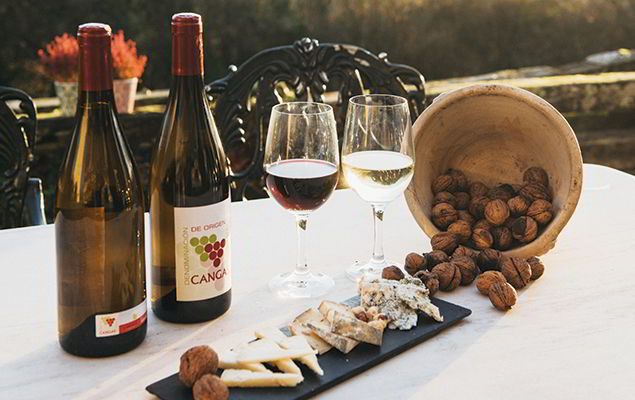
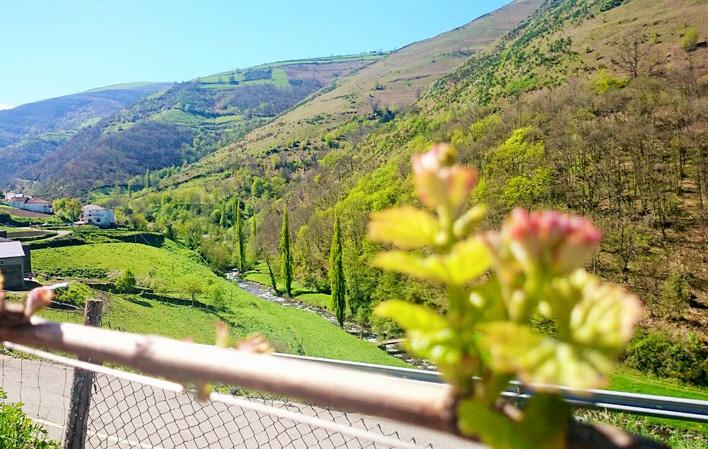
Bodegas Vitheras S.L.
- Title Cangas del Narcea Western Asturias
- Address Address: Polígono Industrial Obanca Nave D. 33819. Oubanca
- Phone 676 921 948
- Email Email: info@vitheras.com
- Site Site: https://vitheras.es/
Viticultores Heroicos Asturianos S.L. (Vitheras S.L.) is a winery located in western Asturias, which began its activities in the summer of 2014, as the continuation of a centuries-old tradition.
Info
The last generation of the house of Don Juan (the grandchildren): Carlos Ron Martínez, Laura Ron Martínez, Miguel Lomba Martínez and Pablo Lomba Martínez have taken the baton from their grandparents, who during their 80 years have tended the vines in these sharp valleys of the Cibea River no more than 10 km from the Villa de Cangas de Narcea.
Viticulture in this type of difficult terrain (such as steep slopes, high altitude or islands) is what is known worldwide as heroic viticulture. However, the history of this winery dates back to the 16th century, specifically to the year 1556, when the oldest document that speaks of the existence of the family's vineyards and their commercialisation (the same vineyard that is now in production and being replanted up to 7 ha).
Specifically, at the end of the 19th century, the wines of this region won international prizes in Bordeaux, Angers, Ruan and Lugo and gained a certain international reputation. People such as Jovellanos spoke with admiration of these wines and the Count of Toreno, Suarez Cantón or the musician Anselmo González del Valle, cultivated extensive vineyards in the area with notable success during the 19th century. Although the arrival of powdery mildew, phylloxera, mildew and black rot diseases in the late 19th and early 20th centuries affected these vineyards, like those throughout Europe, they were rebuilt and continued for many years to produce outstanding wines of similar quality to those produced at that time in many other European regions.
With the arrival of mining, industrialisation and the abandonment of rural areas in the 50s and 60s (20th century), viticulture gradually disappeared, until it was reduced to just small plots of land cared for by the old winegrowers of the area, who were reluctant to abandon them.
Since 1986, Mª del Carmen Martínez, a CSIC scientist, undertook the recovery of this wine-growing area which had been completely forgotten at that time, rescuing, describing, conserving and reintroducing to the market, after many years of research, the native varieties of the area such as Albarín Blanco, Verdejo Negro, Albarín Negro or Carrasquín and other foreign varieties, but which had been cultivated in this area for centuries before and which showed, some of them, a high level of adaptation, producing wines of great quality. This is the case of the Moscatel de Grano Menudo Blanco, or the Moscatel de Grano Menudo Rojo, the latter of which has practically disappeared worldwide, Asturias being the only place in Spain where it is still cultivated in a minority form.
This is where Vitheras S.L. comes into play, using the best of these recovered varieties for the production of its wines, the ones that produce the most original and high quality wines, under the special climate and soil conditions of Asturian viticulture, combining the family and regional tradition of more than 500 years to produce a wine of exceptional quality based on the concept of "terroir" in its broadest sense.
Map
Products
Vitheras White (PDO)
Vitheras Lucía (Rosé)
Guided visits
Yes
Schedules and prices
Friday to Sunday (Consult in advance)
Free
In our online shop you can order any of our products. We deliver throughout Spain, including the islands.



